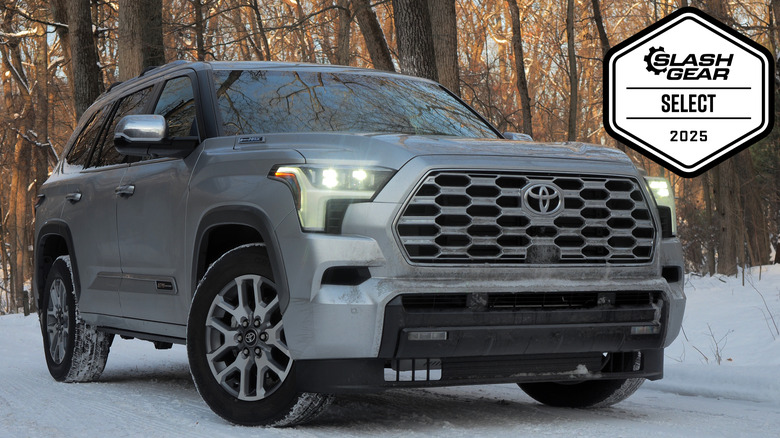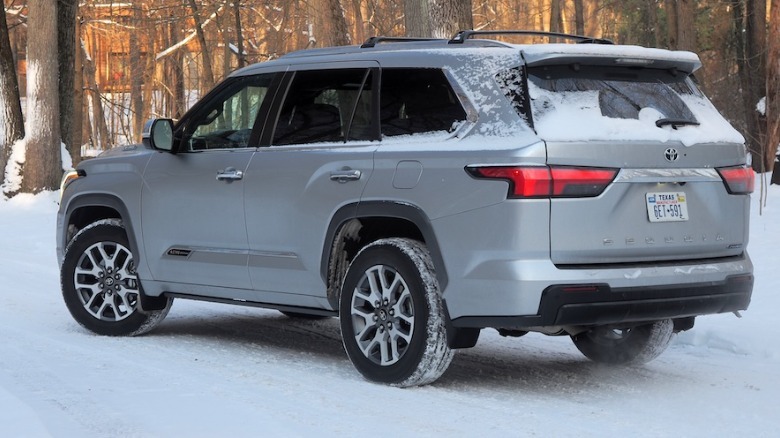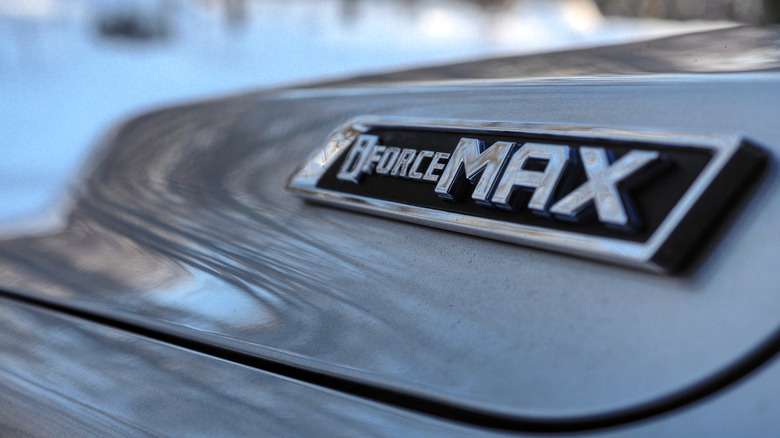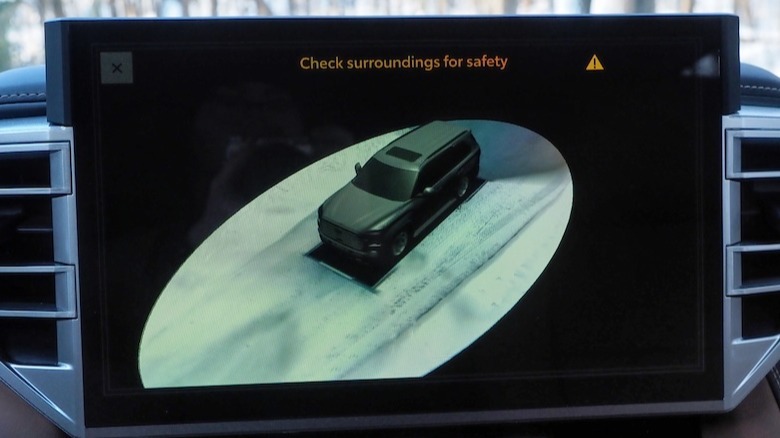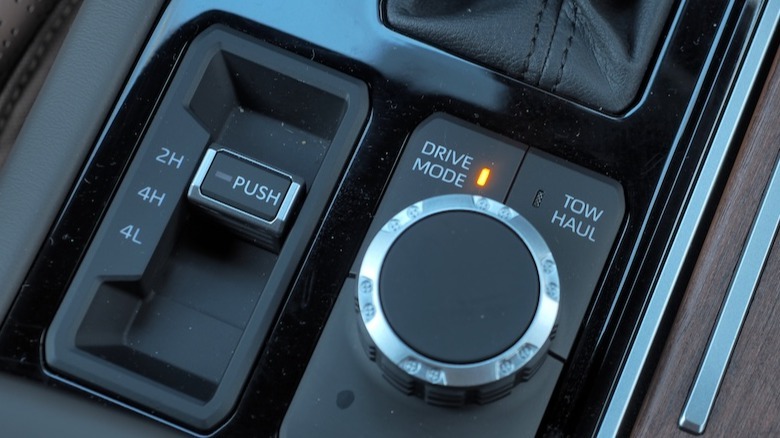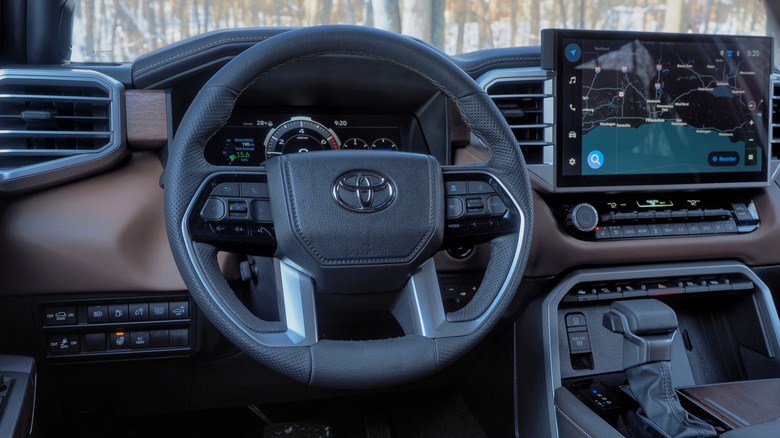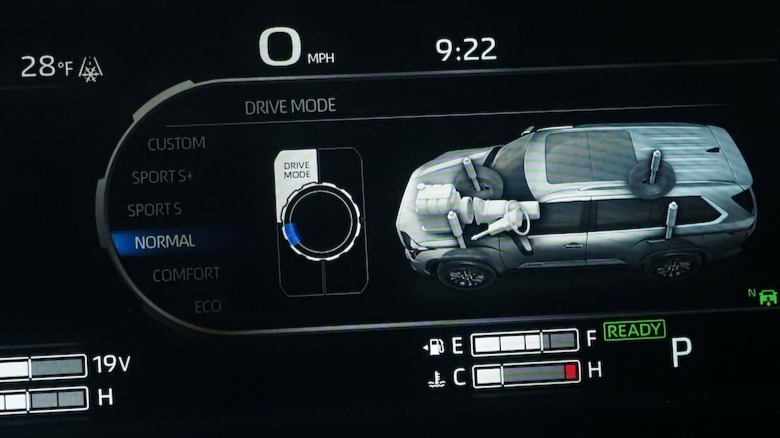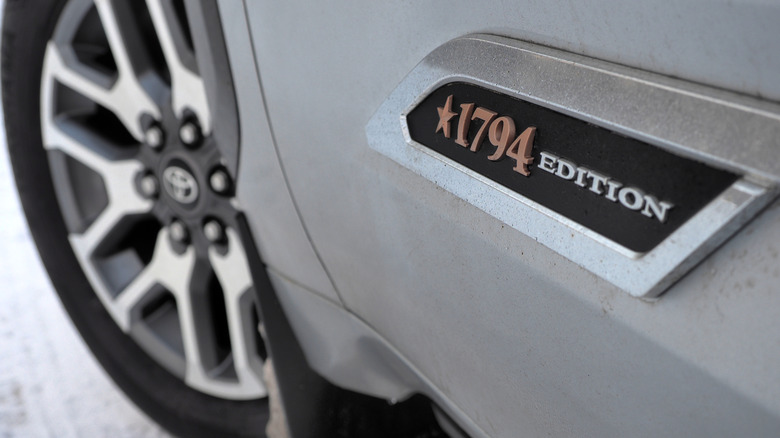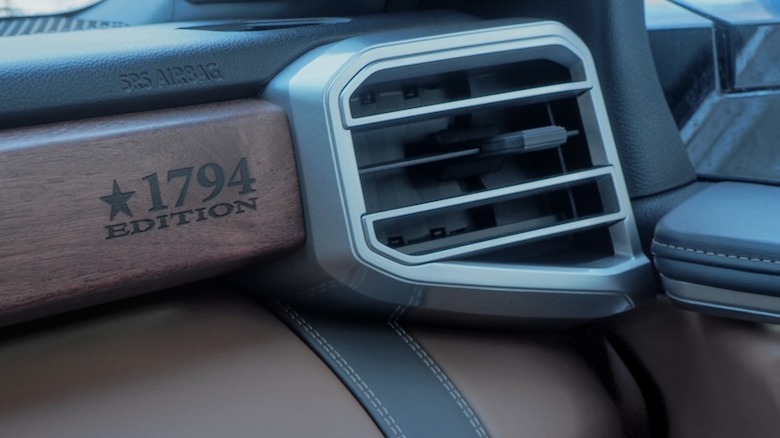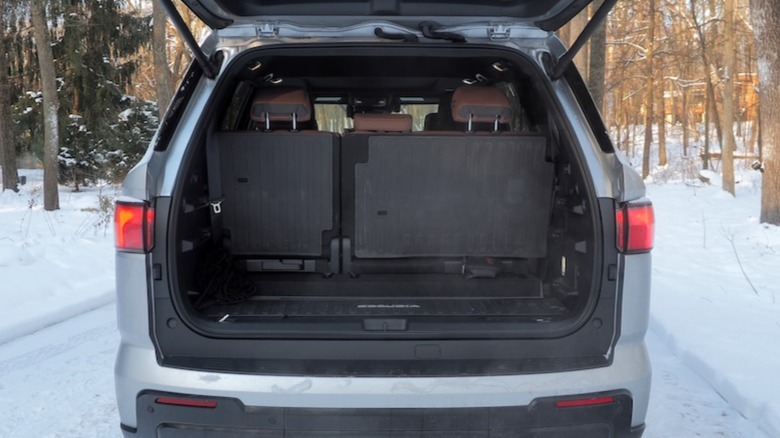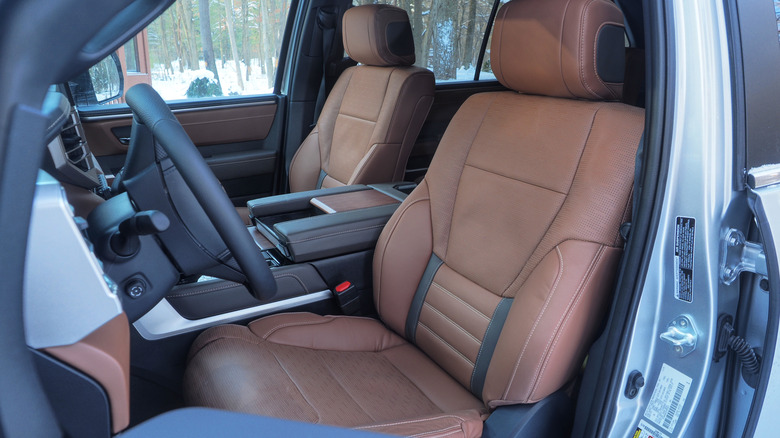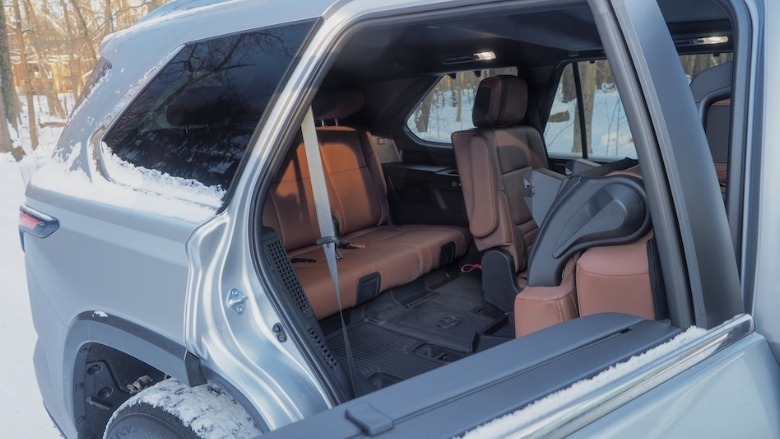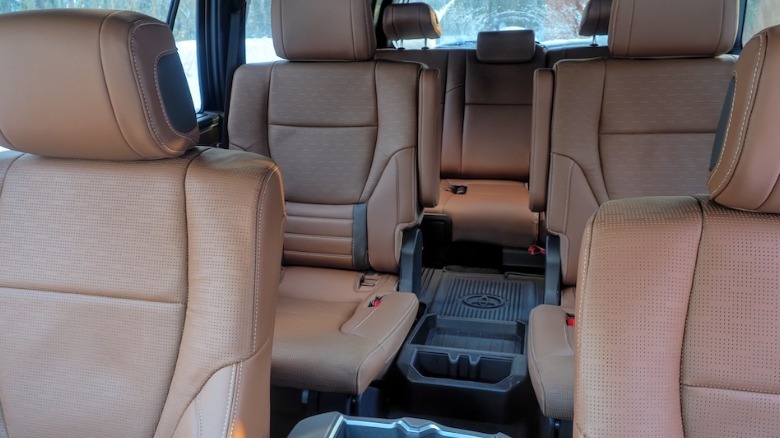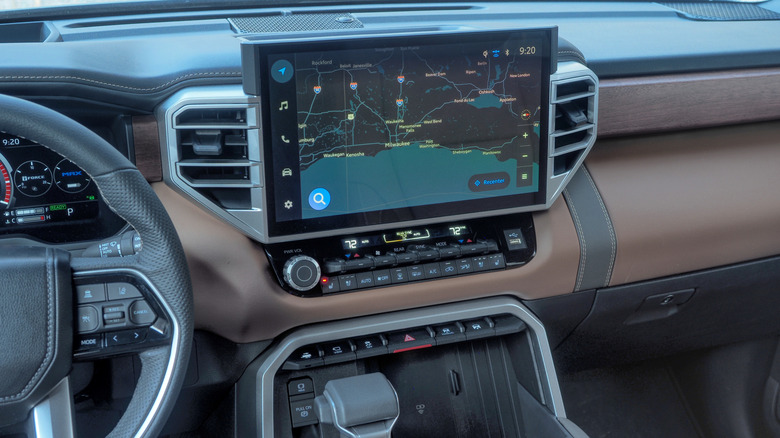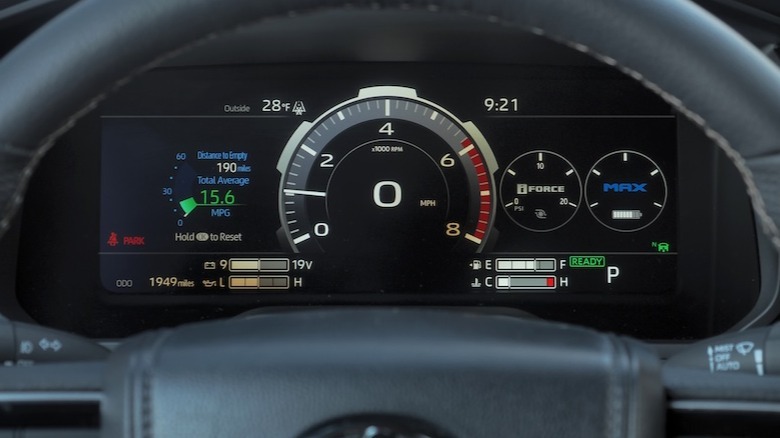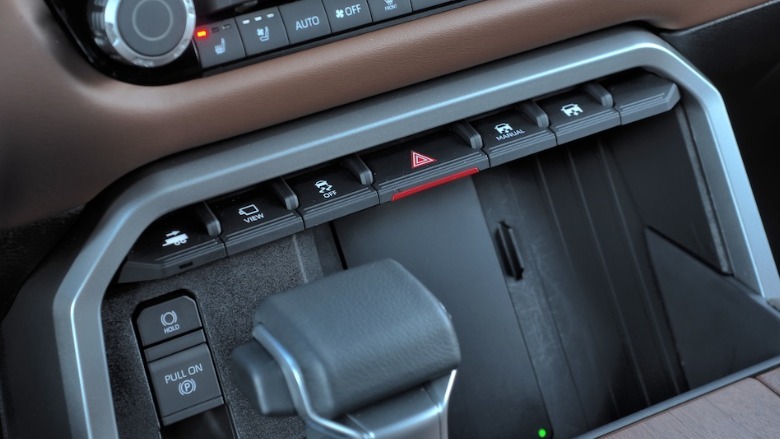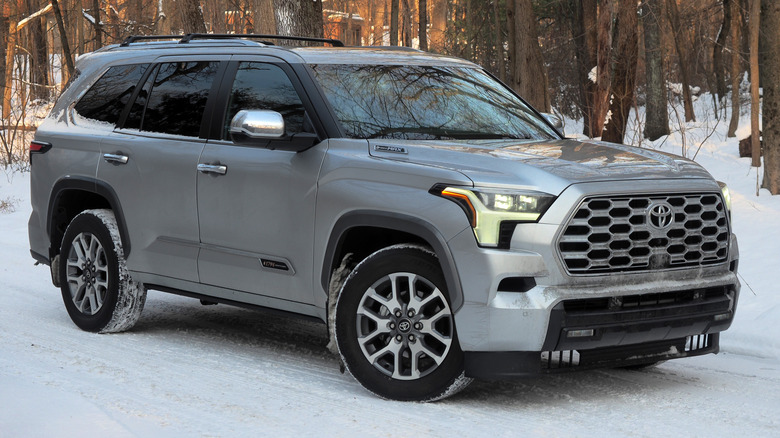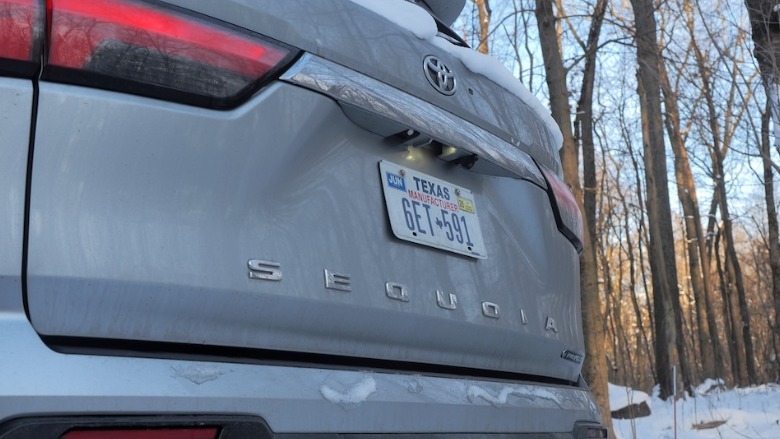2025 Toyota Sequoia Review: Skip The 1794 Edition (And Buy This Trim Instead)
- Hybrid drivetrain is torque-rich and smooth
- Genuine off-road ability
- More frugal than rivals
- Third row and trunk space falls behind class-leaders
- Definitely not a sporty SUV
Things get complicated when you try to define the Toyota Sequoia. On the one hand, the automaker's biggest SUV takes on Ford's Expedition and Chevy's Tahoe for three-row people moving duties. At the same time, Toyota's refusal to give up on the idea that an SUV should be capable off-road, too, leaves the Sequoia toting hardware more road-focused rivals left behind.
Then there's the drivetrain, which bucks the V8 trend still prevalent in at least some of the Sequoia's competition. Ever the fan of hybrids, Toyota doesn't just take Ford's turbo-six route, but throws in some electrification, too.
For the 2025 model year, Toyota is bringing the 1794 Edition to the Sequoia. Intended as a nod to the San Antonio, TX, location where the Tundra and Sequoia are now assembled, it gets different wood and upholstery detailing, 20-inch wheels, and a set of standard features that includes the 14-speaker JBL audio system, front massage seats, and captain's chairs for the second row.
Six cylinders, two turbos, one electric motor
All versions of the 2025 Sequoia come with Toyota's i-FORCE MAX powertrain, a 3.4-liter twin-turbo V6 hybrid. It's electrified, but don't start thinking this beefy SUV is attempting to do for three-row haulers what the Prius did for hatchbacks.
Instead, with a total of 437 horsepower and 583 lb-ft of torque, this is about delivering V8 levels of grunt without quite so many cylinders. 2WD is standard, with 4WD — a part-time system with an electronically controlled two-speed transfer case and automatic limited-slip differential — a $3,000 option on SR5 and Limited trims, and standard on others. Standard, too, is a 10-speed automatic transmission.
Unlike, say, a Ford Expedition or Chevrolet Tahoe, however, Toyota has paired its fancy new hybrid engine with a solid rear axle. That's joy to the ears of those eyeing the Sequoia for overlanding duties, though comes with some compromises for the rest of us.
Frugal, though only by comparison
"Nimble" isn't the first word I'd use to describe a full-size SUV with a curb weight — in 1794 Edition form — of 6,150 pounds. That said, the Sequoia feels more eager from a standing start than most of its V8-powered competitors, and for that, I credit the electrification. As we've seen in hybrids before, even when pure-EV driving isn't the focus, there's a lot you can do with a small battery and a torque-rich electric motor.
In the 2025 Sequoia's case, that's 1.87 kWh and 184 lb-ft from its electric motor/generator. Like in a Prius, the Sequoia tops its battery pack up via energy generated while the SUV is slowing; there's no way to externally charge it by plugging it in. It makes for a very easy-to-live-with system (put gas in: Toyota moves) but also gives you a neat low-speed shove, since the electric motor supplies all its twist while the twin-turbo V6 spools up.
It's a pretty seamless transition between electric and gas power, and frankly most of the time you're burning hydrocarbons anyway; there's no dedicated "EV Mode" as in some hybrids. The main upshot is in economy: where the old, V8 Sequoia 4WD was rated for 14 mpg on the EPA's combined cycle, this new V6 version is rated for 20 mpg. It's worth remembering that 4WD use, conditions — like the snow and ice the Sequoia faced while it was with me — and driving style play a big role, too, mind: I saw just shy of 16 mpg.
The Sequoia is definitely not a sports SUV
Once you're underway, the Sequoia's general heft discourages expressing too much enthusiasm. The optional load-leveling rear height control air suspension — adding $1,045 — helps keep the back end from dipping if you load up the trunk, or if you're taking advantage of the 1794 Edition's 9,010 pound tow rating, but nothing here is about eagerness in corners.
At the front, dual-piston brake calipers clamp down on 13.9-inch ventilated discs, while single-piston versions grab 13.6-inch discs at the rear. Stopping force is never in question (though the brake pedal can lack feel) but again, this is not a sporty SUV. Even if you twist the drive mode dial to the Sport S or Sport S+ settings, the big Toyota seems somewhat nonplussed by the idea of it.
Better, then, to see this as upscale people-moving regardless of whether there's asphalt, or rocks and mud under you. While some trims have seating for eight, the Sequoia 1794 Edition's second row captain's chairs sees that dip to seven. It wraps all three rows with leather upholstery — lesser trims get cloth or SofTex, while Toyota reserves semi-aniline hide for its flagship Capstone trim — with an easily tumbled second row and a third which folds flat to expand the trunk.
Decent space inside, but behind the class-leaders
As you'd hope, given the exterior dimensions, the Sequoia's cabin is a spacious place. Clambering up into it is made easier with the $1,005 power-extending running boards (even if they caught me in the shins more than once; we'll blame my own eagerness to get out of the cold for that). The first and second rows are beyond reproach when it comes to legroom; the third row slides fore and aft, for 28.1 to 33.7 inches of leg space.
That's slightly more than the 33.5-inches you get in the third row of a Grand Highlander, but an inch less than a 2025 Chevrolet Tahoe, and almost three inches less than Ford's 2025 Expedition. Depending on the position of the Sequoia's third row, there's 11.5 to 22.3 cu-ft of trunk space with all seats in play. That expands to 49 and 86.9 cu-ft, with the third and second rows folded, respectively.
Again, not bad, but the Expedition delivers 22.9, 69.9, and 108.5 cu-ft behind the third, second, and third rows respectively, and that's before you get to the even-more-capacious Expedition Max.
Well-equipped inside
Like the Tundra pickup it shares a platform with, the Sequoia's dashboard is dominated (in all but the base trim) by a 14-inch infotainment touchscreen. That supports Apple CarPlay and Android Auto, both connecting wirelessly — though the Sequoia has a whole bunch of USB ports, plus 120/400W outlets in the second row and the cargo area — and Toyota's own infotainment UI is far improved compared to what it once was, with surprisingly capable voice recognition.
A 12.3-inch digital gauge cluster is standard across the board; its graphics are a little busy, and its warning messages (like, say, a front parking sensor being covered with ice) repetitive to the point of infuriating, but the optional head-up display ($600) pares out the most important numbers.
A wireless charger is in the front center console, underneath the dedicated controls for the tri-zone climate control and, on this 1794 Edition, the heated and ventilated front and second row seats.
2025 Toyota Sequoia Verdict
With a base sticker of $80,385 (plus $1,945 destination), this 2025 Sequoia 1794 Edition certainly isn't inexpensive. It's also just $90 more than the Sequoia TRD Pro: you lose the standard panoramic glass roof and the second row ventilated seats, and swap the leather for SofTex, but gain an electronically controlled locking rear differential, off-road suspension, bump the ride height from 8.6 to 9.1 inches, and add special off-road camera views (that are just as useful in tight parking lots).
I can't help but think that the TRD Pro suits the Sequoia's burly persona better. Or, if luxury really is your lodestar, the Capstone is about $3,500 more than the 1794 Edition, but gets the power steps and HUD as standard, plus nicer leather, and 22-inch wheels rather than this trim's 20-inchers.
I like how the Sequoia drives, and its potential for better economy than rivals certainly bodes well. Nonetheless, you're making some sacrifices — primarily around the third row and cargo space — for that off-road-friendly solid rear axle. If you truly need that, then why not lean into it, with the Sequoia TRD Pro?
